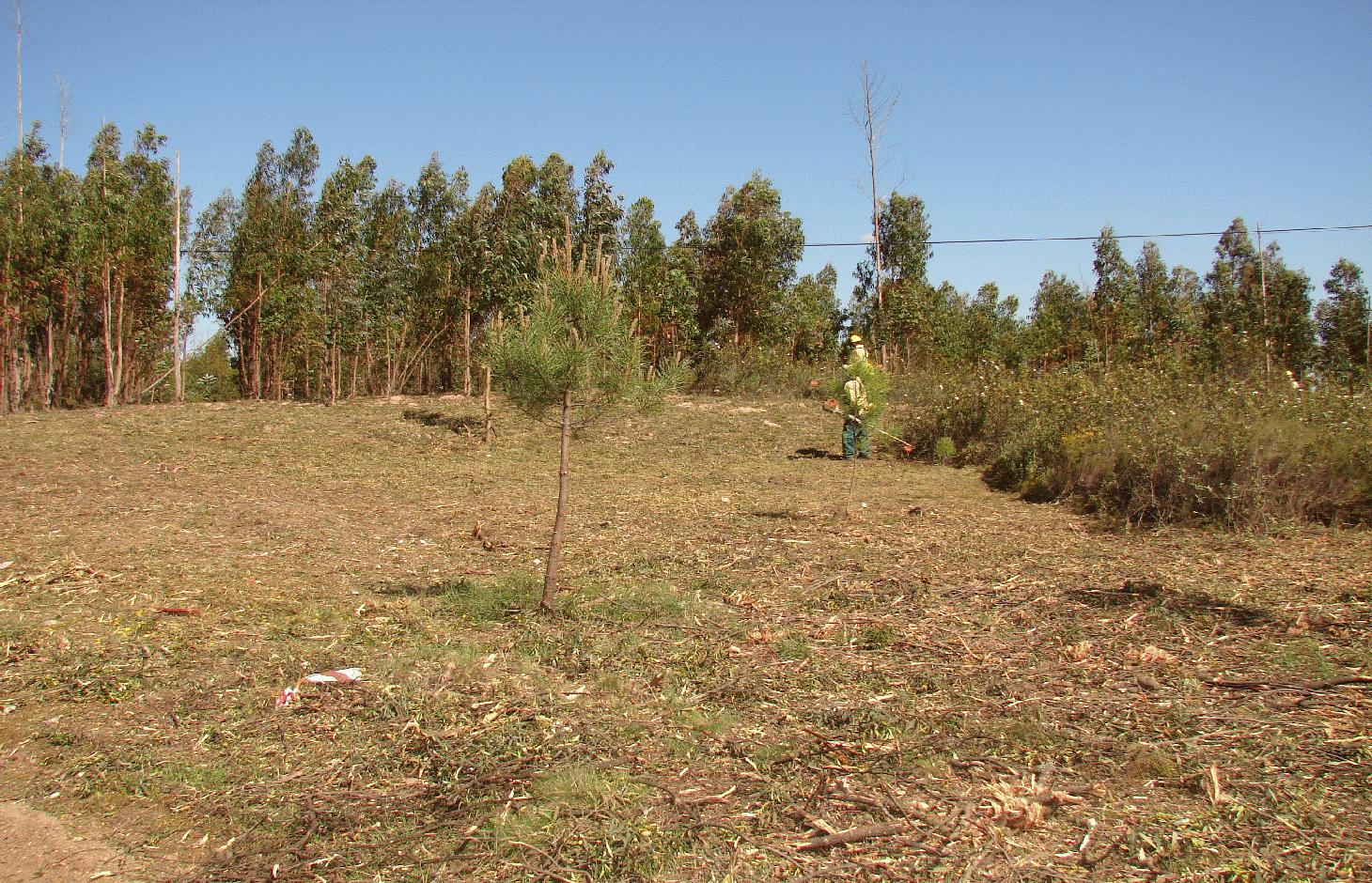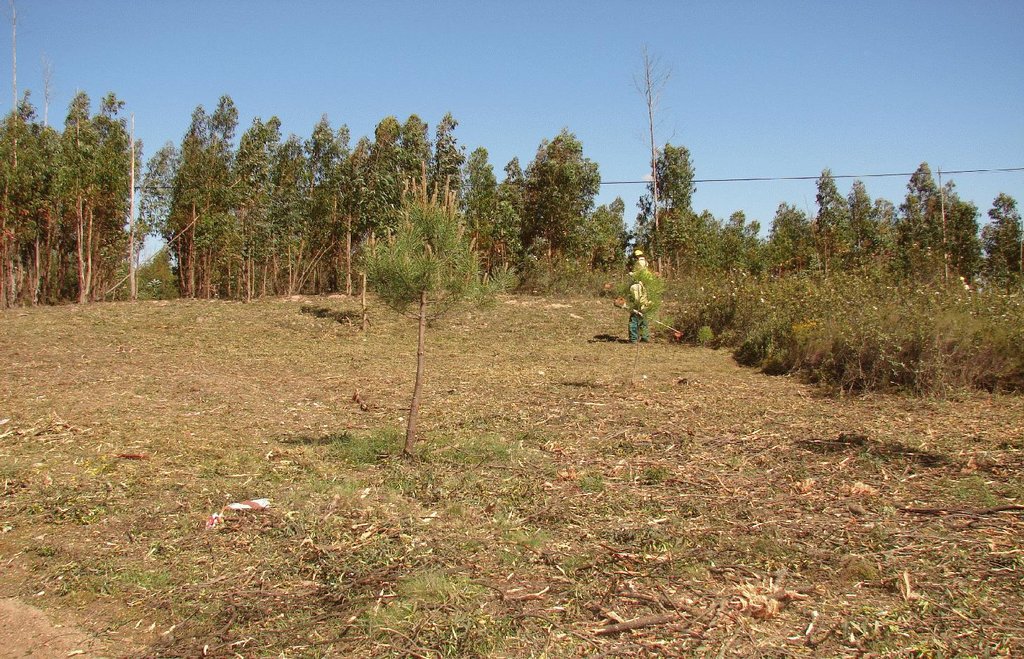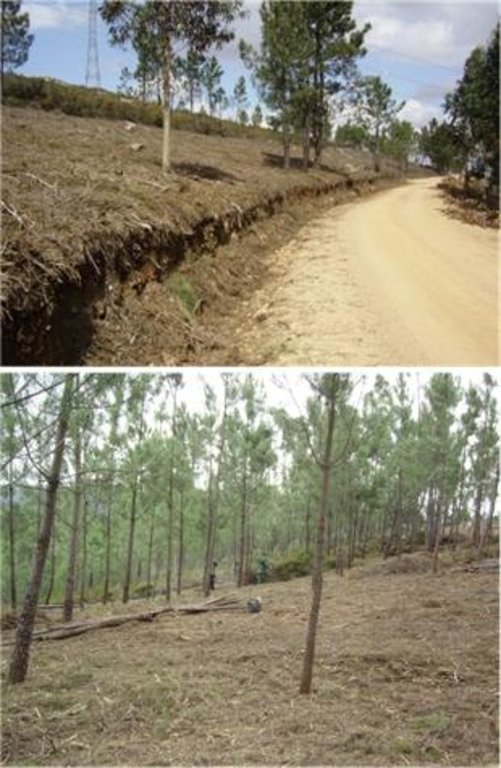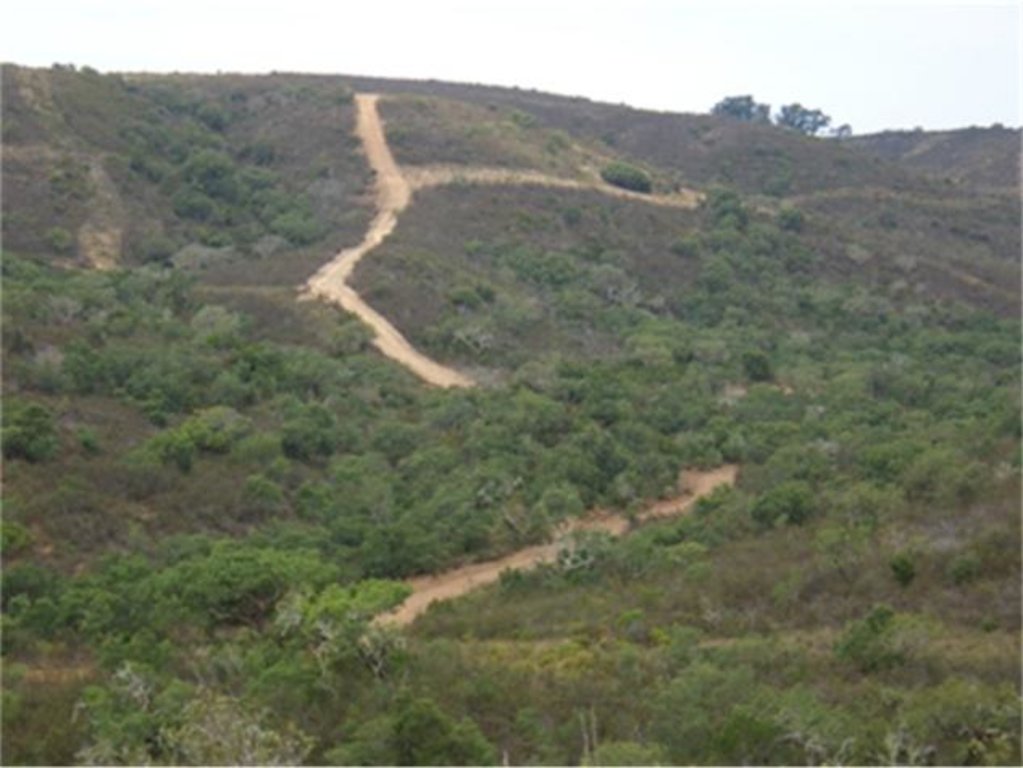Primary strip network system for fuel management [Португалия]
- Создание:
- Обновить:
- Составитель: Celeste Coelho
- Редактор: –
- Рецензенты: Deborah Niggli, Alexandra Gavilano
Primary strip network system for fuel management
technologies_1361 - Португалия
Просмотреть разделы
Развернуть все Свернуть все1. Общая информация
1.2 Контактные данные специалистов и организаций, участвующих в описании и оценке Технологии
Специалист по УЗП:
Специалист по УЗП:
Louro António
Aflomação - Forest Association of Mação
Португалия
Специалист по УЗП:
Ventinhas Marta
Aflomação - Forest Association of Mação
Португалия
Специалист по УЗП:
Bragança Nuno
Aflomação - Forest Association of Mação
Специалист по УЗП:
Mariano Inês
Aflomação - Forest Association of Mação
Португалия
Название проекта, содействовавшего документированию/оценке Технологии (если применимо)
DESIRE (EU-DES!RE)Название организации (-ий), содействовавших документированию/оценке Технологии (если применимо)
University of Aveiro (University of Aveiro) - ПортугалияНазвание организации (-ий), содействовавших документированию/оценке Технологии (если применимо)
Forest Association of Mação (Aflomação) (Aflomação) - Португалия1.3 Условия, регламентирующие использование данных, собранных ВОКАТ
Составитель и ответственный(-ые) специалист(-ы) согласны с условиями, регламентирующими использование собранных ВОКАТ данных:
Да
1.5 Ссылка на Анкету (ы) по Подходам УЗП (документируется с использованием ВОКАТ)
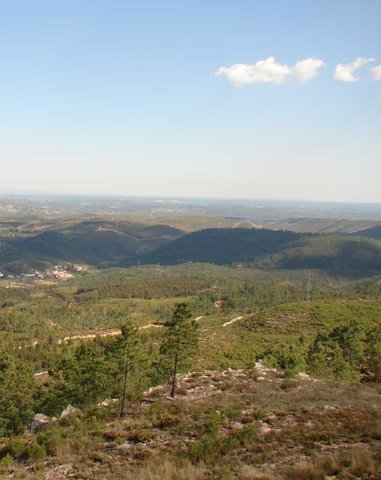
Forest Intervention Area (ZIF) [Португалия]
Forest Intervention Area (ZIF) is a territorial unit, where the main land use is forestry. This approach assembles and organizes small forest holders and defines a joint intervention for forest management and protection. Defined by law in 2005, and revised in 2009, each ZIF of private forest has to include …
- Составитель: Celeste Coelho
2. Описание Технологии УЗП
2.1 Краткое описание Технологии
Определение Технологии:
Linear strips are strategically located in areas where total or partial removal of the forest biomass is possible. This technology contributes towards preventing the occurrence and spread of large forest fires and reducing their consequences for the environment, people, infrastructures, etc.
2.2 Подробное описание Технологии
Описание:
There are three types of strip for fuel management in forest areas: primary, secondary and tertiary, defined by the Law 17/2009. The most important differences between them are in terms of size (primary being the widest and the tertiary the narrowest) and scale (primary referring to the district level, secondary to the municipal level and tertiary to the parish level). The primary strip network system for fuel management (RPFGC) is integrated in the National System to Prevent and Protect Forest against Fires and it is defined by the National Forest Authority (AFN).
Purpose of the Technology: The RPFGC aims to re-arrange landscape elements, through the establishment of discontinuities in the vegetation cover, in forest areas and in the rural landscape (for example using water bodies, agricultural land, pasture, rocky outcrops, shrubland and valuable forest stands). Land tenure is private in most of the areas covered by the RPFGC. The main objectives of this technology are: to decrease the area affected by large fires; to enable direct access by fire fighters; to reduce fire effects and protect roads, infrastructures and social equipment, urban areas and forest areas of special value; and to isolate potential fire ignition sources.
Establishment / maintenance activities and inputs: These primary strips are ≥ 125 metres wide and preferably between 500 and 10,000 ha in area. The tree cover should be less than 50% of the area and the base of the tree canopy should not be lower than 3 metres. The RPFGC concept should include the adoption of a maintenance programme. The implementation and maintenance operations can be performed through different agro-forest technologies, such as clearance of bushes and trees, pruning, prescribed fire, harrowing and cultivation of the ground beneath the trees. Timber products can be sold and the removed litter can be used in a biomass power plant or applied to the fields to improve soil fertility, using mulching technology.
Natural / human environment: This SWC Technology needs considerable financial resources in terms of labour and equipment at the implementation phase. Costs, however, undergo considerable reduction thereafter. The implementation of this infrastructure to prevent and protect the land from forest fire is entirely funded by the government and implemented by the forest municipal services.
2.3 Фотографии, иллюстрирующие Технологию
2.5 Страна/ регион/ места, где применяется Технология, информация о которых собрана в данной Анкете
Страна:
Португалия
Административная единица (Район/Область):
Portugal
Более точная привязка места:
Santarém / Mação
Охарактеризуйте пространственное распространение Технологии :
- равномерно-однородное применение на определенной площади
Если технология равномерно занимает территорию, укажите площадь покрытия (в км2):
400,0
Пояснения:
Total area covered by the SLM Technology is 400 km2.
There has been some work carried out to develop the secondary system of linear strips for fuel management. These will provide the basis for the implementation of the primary system. The PROF | PIS - Plano Regional de Ordenamento Florestal do Pinhal Interior Sul (Regional Plan for Forestry Management and Planning of the Pinhal Interior Sul) has designated an area of 1752 ha with a total length of 141 km as the contribution to the primary system of fire prevention by the Mação municipality.
Map
×2.6 Сколько лет применяется данная Технология
Если год начала применения Технологии достоверно неизвестен, дайте примерную оценку:
- менее 10 лет назад (недавняя)
2.7 Внедрение Технологии
Укажите, как именно Технология УЗП была внедрена:
- через проекты/ внешнее вмешательство
3. Классификация Технологии УЗП
3.2 Текущий(-ие) тип(-ы) землепользования на территории, где применяется Технология
Комбинированное землепользование в пределах одной и той же земельной единицы:
Да
Укажите сочетания типов землепользования (посевы / пастбища / деревья):
- Лесо-пастбищное хозяйство

Пастбищные угодья
Вид животных:
- козы
- овца

Леса/ лесистая местность
- (Квази-) Природные леса/ лесные массивы
(Квази-) Природные леса / лесные массивы: Укажите тип управления:
- Выборочные рубки
- Сплошные рубки
Вид деревьев:
- Виды Эвкалиптов
- Вид сосны (сосна)
Продукции и услуги:
- Древесина
- Дрова
Пояснения:
Major land use problems (compiler’s opinion): Forest fires increase due to rural depopulation and to land management abandonment.
Other grazingland: silvo-pastoralism: Goats and sheep.
Selective felling of (semi-) natural forests: Pine.
Clear felling of (semi-)natural forests: Eucalyptus.
Other type of forest: clear felling of (semi-)natural forests: Eucalyptus.
Forest products and services: timber, fuelwood
Constraints of settlement / urban: Proximity of forest to urban areas.
Constraints of infrastructure network (roads, railways, pipe lines, power lines): Ignition sources.
Number of growing seasons per year: 2
Longest growing period in days: 1Longest growing period from month to month: 1 per year
Livestock density: 1-10 LU /km2
3.4 Водоснабжение
Пояснения:
Water supply: rainfed, rainfed
3.5 Категория УЗП, к которой относится Технология
- лесное хозяйство в естественных и измененных лесах
- снижение риска природных стихийных бедствий на основе экосистемного подхода
3.6 Мероприятия УЗП, выполняемые в рамках Технологии

инженерные мероприятия
- И11: Другие
Пояснения:
Main measures: structural measures
3.7 Основные проблемы деградации земель, на решение которых направлена Технология

биологическая деградация
- Бп: разрушительные последствия пожаров
Пояснения:
Main type of degradation addressed: Bf: detrimental effects of fires
Main causes of degradation: deforestation / removal of natural vegetation (incl. forest fires) (Forest fire frequency and intensity.), Property size (Small pieces of land (< 0.5 ha).)
Secondary causes of degradation: Population density (Ageing population structure and depopulation.)
3.8 Предотвращение и снижение деградации земель, или восстановление нарушенных земель
Укажите цель Технологии по отношению к деградации земель :
- предотвращение деградации земель
Пояснения:
Main goals: prevention of land degradation
4. Технические характеристики, мероприятия по практической реализации, вложения и стоимость
4.1 Технический рисунок, иллюстрирующий Технологию
Спецификация (пояснения к техническому рисунку):
This technical drawing indicates the technical specifications, dimensions and spacing for the Primary Strip Network System for Fuel Management. The figure shows a road as the axis of the RPFGC, but it can also be a river or a ridge, amongst other breaks in the forest cover.
Location: Portugal. Santarém / Mação
Date: 16/01/2009
Technical knowledge required for field staff / advisors: high
Technical knowledge required for land users: low
Main technical functions: control of fires
Secondary technical functions: reduction of dry material (fuel for wildfires), spatial arrangement and diversification of land use
Автор:
João Soares, University of Aveiro, Campus Universitário de Santiago, 3810 - 193 Aveiro, Portugal
4.2 Общая информация по необходимым вложениям и стоимости
другая/ национальная валюта (название):
Euro
Если это необходимо, укажите обменный курс от доллара США к местной валюте (например, 1 доллар США = 79,9 бразильского реала): 1 доллар США =:
0,76
Укажите среднюю дневную заработную плату наемных работников:
18.75
4.3 Мероприятия, необходимые для начала реализации
| Деятельность | Время (сессия) | |
|---|---|---|
| 1. | Primary System design | n. a. |
| 2. | Shrubs cleaning + Thinning (reduction of fuel load) + Pruning | Dry season |
| 3. | Removing the cut waste material | |
| 4. | Litter Shredding | |
| 5. | Transport to the Biomass Plant |
4.4 Вложения и затраты, необходимые для начала реализации
| Опишите затраты | Единица | Количество | Затраты на единицу | Общая стоимость на единицу | % затрат, оплаченных землепользователями | |
|---|---|---|---|---|---|---|
| Оплата труда | Labour | ha | 1,0 | 1076,0 | 1076,0 | |
| Оборудование | Machine use | ha | 1,0 | 568,0 | 568,0 | |
| Оборудование | Transport | ha | 1,0 | 100,0 | 100,0 | |
| Общая стоимость запуска Технологии | 1744,0 | |||||
| Общие затраты на создание Технологии в долларах США | 2294,74 | |||||
4.6 Стоимость поддержания/ текущего обслуживания ( в год)
Пояснения:
The costs calculation was made for the implementation of the first section of the RPFGC. The implementation phase lasted for 2 or 3 months during the dry season. This section included 28 ha and 4 teams of forest sappers were involved.
4.7 Наиболее значимые факторы, влияющие на стоимость затрат
Опишите наиболее значимые факторы, влияющие на стоимость затрат:
The costs include the activities to ensure the vertical and horizontal discontinuity of the fuel load and also the activities needed to manage the waste produced from the shrubs cleaning and thinning.
5. Природные и социально-экономические условия
5.1 Климат
Среднегодовое количество осадков
- < 250 мм
- 251-500 мм
- 501-750 мм
- 751-1000 мм
- 1001-1500 мм
- 1501-2000 мм
- 2001-3000 мм
- 3001-4000 мм
- > 4000 мм
Пояснения/ комментарии по осадкам:
The rainfall ranges from 1000 mm in the North to less than 600 mm per year in the South of the municipality.
Агроклиматическая зона
- Умеренно-влажная
Thermal climate class: temperate
5.2 Рельеф
Склоны (преобладающие):
- пологие (0-2%)
- покатые (3-5%)
- покато-крутые (6-10%)
- крутые (11-15%)
- очень крутые (16-30%)
- чрезвычайно крутые (31-60%)
- обрывистые (>60%)
Формы рельефа:
- плато/ равнины
- гребни хребтов/холмов
- склоны гор
- склоны холмов
- подножья
- днища долин
Зона высотной поясности:
- 0-100 м над уровнем моря
- 101-500 м н.у.м.
- 501-1000 м н.у.м.
- 1001-1500 м н.у.м.
- 1501-2000 м н.у.м.
- 2001-2500 м н.у.м.
- 2501-3000 м н.у.м.
- 3001-4000 м н.у.м.
- > 4 тыс. м н.у.м.
Укажите, приурочено ли применение Технологии к специфическим условиям:
- в ситуациях вогнутого рельефа
5.3 Почвы
Средняя мощность почв:
- поверхностные (0-20 см)
- неглубокие (21-50 см)
- умеренно глубокие (51-80 см)
- глубокие (81-120 см)
- очень глубокие (> 120 см)
Гранулометрический состав (верхнего горизонта):
- средние фракции (суглинистый, супесчаный)
Содержание органического вещества в верхнем горизонте:
- низкое (< 1%)
Если возможно, приложите полное описание почв или укажите доступную информацию, например тип почв, рH/ кислотность почв, ёмкость катионного обмена, содержание азота, содержание солей и т.д.
Soil depth on average is very shallow: Thin and stony terrains
Soil fertility is low
Soil drainage/infiltration is poor
Soil water storage capacity is low
5.4 Доступность и качество воды
Уровень грунтовых вод:
5-50 м
Доступность поверхностных вод:
средняя
Качество воды (без обработки):
питьевая вода хорошего качества
5.5 Биоразнообразие
Видовое разнообразие:
- средняя
5.6 Характеристика землепользователей, применяющих Технологию
Рыночная ориентация производства:
- смешанный (натуральный / коммерческий)
Доходы из других источников:
- > 50% всех доходов
Относительный уровень достатка:
- плохой
- средний
Индивидуальное или коллективное хозяйство:
- группа/ община
Уровень механизации:
- ручной труд
- тягловая сила
Пол:
- женщины
- мужчины
Укажите другие важные характеристики землепользователей:
Land users applying the Technology are mainly common / average land users
Population density: 10-50 persons/km2
Annual population growth: negative; 2%
50% of the land users are average wealthy and own 50% of the land.
50% of the land users are poor and own 50% of the land.
Level of mechanization is manual labour or animal traction (Small machines are used)
market orientation is mixed (more subsistence than commercial).
5.7 Средняя площадь земель, используемых землепользователями с применением Технологии
- < 0,5 га
- 0,5-1 га
- 1-2 га
- 2-5 га
- 5-15 га
- 15-50 га
- 50-100 га
- 100-500 га
- 500-1000 га
- 1000-10000 га
- > 10000 га
Считается ли это мелким, средним или крупным хозяйством (по местным масштабам)?
- мелкое
Пояснения:
Average area of land owned or leased by land users applying the Technology: < 0.5 ha, < 0.5 ha, 2-5 ha
Size of forest/ woodland area per hosuehold: 25 plots.
5.8 Собственность на землю, права на земле- и водопользование
Землевладелец:
- индивидуальная, не оформленная в собственность
- индивидуальная, оформленная в собственность
Право землепользования:
- индивидуальное
Право водопользования:
- неограниченное (неконтролируемое)
Пояснения:
Individual, not titled: Usually, legal documents for the property are missing.
5.9 Доступ к базовым услугам и инфраструктуре
медицинское обслуживание:
- плохой
- средний
- хорошая
образование:
- плохой
- средний
- хорошая
технические консультации:
- плохой
- средний
- хорошая
занятость (вне хозяйства):
- плохой
- средний
- хорошая
рынки:
- плохой
- средний
- хорошая
электроснабжение:
- плохой
- средний
- хорошая
транспорт и дорожная сеть:
- плохой
- средний
- хорошая
водоснабжение и канализация:
- плохой
- средний
- хорошая
финансовые услуги:
- плохой
- средний
- хорошая
telecommunications:
- плохой
- средний
- хорошая
6. Воздействия и заключительные положения
6.1 Влияние Технологии УЗП в пределах территории ее применения
Социально-экономическое воздействие
Продуктивность
производство кормов
Комментарий/ пояснения:
Vegetation removal, either by machinery or prescribed fire, produces fresh growth for grazing.
качество кормов
Комментарий/ пояснения:
The new growth provides more diverse and nutritious fodder.
производство продуктов животноводства
Комментарий/ пояснения:
The low fuel load can be maintained through grazing.
производство древесины
Комментарий/ пояснения:
Most of the primary system will be implemented in zones of low productivity. However, in some areas tree thinning can cause a decrease in wood production.
разнообразие продукции
Комментарий/ пояснения:
Increase of by-products from grazing.
площадь, используемая для производства продукции
Комментарий/ пояснения:
The use of wood as a fuel for a power station and the use of vegetation to feed the cattle can promote the development of new crops and land uses.
In some areas, the implementation of the primary system can occupy productive land. The main aim of this technology is always to provide protection from forest fires instead of creating productive land.
производство электроэнергии
Комментарий/ пояснения:
After cutting the shrubs, biomass is taken to a plant to energy production.
The cleared ground, on mountain summits, of the primary system is used for wind farms. Cleared vegetation could be used as fuel for a power station.
Доходы и затраты
разнообразие источников дохода
Комментарий/ пояснения:
The strips will mainly occupy areas of low productivity. The vegetation removed can be used as fuel for a power station. The maintenance of the primary system through grazing will create opportunities in terms of cattle grazing and all the resulting by-pr
Другое социально-экономическое воздействие
Costs of implementation
Комментарий/ пояснения:
The implementation of the primary system is very costly.
Maintenance costs
Социальное и культурное воздействие
состояние здоровья
Комментарий/ пояснения:
Improved air quality by reducing forest fires risk.
культурные возможности
возможности отдыха и рекреации
местное самоуправление
институты госуправления
знания в области УЗП/ деградации земель
смягчение конфликтов
Комментарий/ пояснения:
Some forest owners can have some difficulties in accepting the loss of their land to this technology. This can be even more difficult if they have some wood production on such land, so that it represents an income reduction.
Improved livelihoods and human well-being
Комментарий/ пояснения:
reduced risk of wildfire
Экологическое воздействие
Водный цикл/ поверхностный сток
сбор воды/ водоудержание
поверхностный сток
Комментарий/ пояснения:
Associated with the vegetation removal.
водный дренаж
испарение
Почвы
влажность почв
Комментарий/ пояснения:
Associated with the vegetation removal.
почвенный покров
Комментарий/ пояснения:
Vegetation removal, either by machinery or prescribed fire, enhances the diversity of the new vegetation cover. In some cases thinning the trees will have a positive effect by reducing the competition for water, sunlight and nutrients and (...)
утрата почв
образование корки на поверхности почв/ запечатывание
уплотнение почв
круговорот/ восполнение питательных веществ
почвенное / подземное органическое вещество/ углерод
Биоразнообразие: растительность, животный мир
биомасса/ содержание углерода в надземной биомассе
Комментарий/ пояснения:
Sometimes a loss which is associated with the immediate effects of vegetation removal.
разнообразие флоры
Комментарий/ пояснения:
Vegetation removal, either by machinery or prescribed fire, enhances the appearance of new plants.
инвазивные чужеродные виды
Комментарий/ пояснения:
The fuel load management in the primary system, involving the implementation of good forest practices, including the removal and control of invasive species.
разнообразие фауны
Комментарий/ пояснения:
Vegetation removal, either by machinery or prescribed fire, enhances the appearance of new plants and consequently of new associated animals. The installation of fodder on the strips will promote grazing activities, increasing the number of goats, (...)
полезные виды
разнообразие местообитаний
Комментарий/ пояснения:
But also increased habitat fragmention
Климат и снижение риска стихийных бедствий
выбросы углекислого газа и парниковых газов
риск пожаров
скорость ветра
Комментарий/ пояснения:
In some cases, where there is a total removal or a huge reduction in vegetation cover.
Другие экологические последствия
Risk towards adverse events
Комментарий/ пояснения:
This technology is an impediment to forest fire propagation and therefore reduces fire risk.
Soil erosion
Комментарий/ пояснения:
Usually, the soil in the areas designated for the implementation of the primary system is thin and poor. The use of machinery and vegetation removal can accelerate the soil erosion processes.
6.2 Влияние Технологии за пределами территории ее применения
ущерб прилегающим полям
Комментарий/ пояснения:
Forest area.
ущерб объектам инфраструктуры общего/ частного пользования
Комментарий/ пояснения:
The technology aims to reduce forest fire frequency and intensity, and the associated damage.
6.3 Подверженность и чувствительность Технологии УЗП к постепенным изменениям климата и экстремальным погодным явлениям/ стихийным бедствиям, связанным с изменением климата (в понимании землепользователей)
Постепенное изменение климата
Постепенное изменение климата
| Сезон | увеличение или уменьшение | Насколько успешно Технология справляется с этим? | |
|---|---|---|---|
| среднегодовые температуры | увеличилось | хорошо |
Экстремальные явления, связанные с изменением климата (стихийные бедствия)
Погодные стихийные бедствия
| Насколько успешно Технология справляется с этим? | |
|---|---|
| местные ливневые дожди | плохо |
| местные ураганы | плохо |
Стихийные бедствия климатического характера
| Насколько успешно Технология справляется с этим? | |
|---|---|
| засухи | плохо |
Гидрологические стихийные бедствия
| Насколько успешно Технология справляется с этим? | |
|---|---|
| регулярные наводнения (выход рек из берегов) | плохо |
Другие воздействия, связанные с изменением климата
Другие воздействия, связанные с изменением климата
| Насколько успешно Технология справляется с этим? | |
|---|---|
| сокращение вегетационного периода | хорошо |
6.4 Анализ эффективности затрат
Насколько получаемый результат сопоставим с первоначальными вложениями (с точки зрения землепользователей)?
Эффективность затрат в краткосрочной перспективе:
влияние незаметно
Эффективность затрат в долгосрочной перспективе:
позитивное
Насколько получаемый результат сопоставим с текущими расходами по поддержанию технологии (с точки зрения землепользователей)?
Эффективность затрат в краткосрочной перспективе:
влияние незаметно
Эффективность затрат в долгосрочной перспективе:
позитивное
Пояснения:
The maintenance will only start 2 or 3 years after the technology implementation, so no returns are expected at short-term.
6.5 Внедрение Технологии
Пояснения:
Comments on acceptance with external material support: 100% of the technology was implement by local administration, with support from the government.
There is a strong trend towards spontaneous adoption of the Technology
Comments on adoption trend: After the implementation period there was a high local acceptance of the technology. It is also expected that grazing activities contribute to the technology maintenance
6.7 Сильные стороны/ преимущества/ возможности Технологии
| Сильные стороны/ преимущества/ возможности по мнению составителя или других ключевых специалистов |
|---|
|
Fuel load reduction How can they be sustained / enhanced? This will be achieved using prescribed fire and specialised machinery. The efficacy of prescribed fire depends on the collaboration of technicians and forest sapper teams. To guarantee the effectiveness of RPFGC implementation, long-term maintenance has to be ensured. |
|
Reinforcement of the forest path system How can they be sustained / enhanced? Clearing the strips of the RPFGC can enhance the forest track network. |
|
Forest fire prevention and fighting How can they be sustained / enhanced? The know-how of the local stakeholders and communities will contribute to the design of the RPFGC . This information should be integrated into the Municipal Plans to Prevent and Protect Forest Against Fires (PMDFCI). Any further information should be provided to the Civil Protection Agencies and to the Forest Technical Office and also to the local fire-brigade team. |
|
Increase in landscape resilience How can they be sustained / enhanced? This will only be effective if the RPFGC is continuous and without gaps. The acceptance of the RPFGC by the landowners is fundamental to widespread the use of this technology. Information and awareness about the need to change vegetation cover is also very important, in order to avoid extensive areas of monoculture. |
6.8 Слабые стороны/ недостатки/ риски Технологии и пути их преодоления
| Слабые стороны/ недостатки/ риски по мнению составителя или ответственных специалистов | Возможные пути их преодоления/снижения? |
|---|---|
| Soil erosion increase | Forestry good practices should be used in the RPFGC implementation, especially concerning the use of machinery and avoiding disturbance of soil at depth. Soil cover after the removal of the existing vegetation should be promoted (by seeding, mulching or creating a low intensity pasture). |
| Soil cover reduction | Soil cover after the removal of the existing vegetation should be promoted (by seeding, mulching or creating a low intensity pasture). |
| Runoff increase | Soil cover after the removal of the existing vegetation should be promoted (by seeding, mulching or creating a low intensity pasture). Excessive vegetation removal should be avoid, especially near water courses where the removal should be nil or minimum. |
| Budget for implementation and maintenance | European and national funds. Collaboration of the local government providing equipment and labour force. Information and awareness to the landowners about the importance of this technology. Campaigns of national awareness and definition of this technology as ‘public use’ to overcome some potential social conflicts concerning the land rights. |
7. Справочные материалы и ссылки
7.1 Методы сбора/ источники информации
7.2 Ссылки на опубликованные материалы
Название, автор, год публикации, ISBN:
Decree-Law n. 124/2006, 28 June. Official Gazette n. 123 – I series: 4586-4599; Decree-Law n. 17/2009, 14 January. Official Gazette n. 9 – I series: 273-295.
Ссылки и модули
Развернуть все Свернуть всеСсылки

Forest Intervention Area (ZIF) [Португалия]
Forest Intervention Area (ZIF) is a territorial unit, where the main land use is forestry. This approach assembles and organizes small forest holders and defines a joint intervention for forest management and protection. Defined by law in 2005, and revised in 2009, each ZIF of private forest has to include …
- Составитель: Celeste Coelho
Модули
Нет модулей


